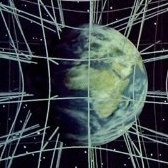Leaderboard
Popular Content
Showing content with the highest reputation on 09/03/20 in all areas
-
As with all conspiracy theories, people who 'THINK' they understand, ARE the problem. No evidence, just 'coincidences and a gut feeling' ??? I thought we didn't do conspiracy theories on SFN. And with crap like this, the more exposure they get, the worse it becomes. ( I'd actually consider shutting down the thread, but that would be censorship )2 points
-
1) A taylor series, like any converging series (do you understand converging) may be used to estimate in numeric calculation or stand in for algebraically in formula an expression that is difficult to handle. If the series convderges quickly enough (it often does) we can ignore all terms after the first n, for some small n. There are criteria for deciding how many terms to use. The process of discarding the rest is called truncation. Wolfram has a good explanation https://mathworld.wolfram.com/TaylorSeries.html 2) An aperture is an opening, which is used to describe the 'size' of something or the size of something being measured or that can pass through. So this term is widely used in geosciences. Polyzoa (Fenestrilina) colonies form a basket like weave with apertures in the basket to filter and trap particles washing through. Acidic groundwater percolating through susceptible rocks (eg limestone) solution weather apertures in the solid rock. In photogeology the aperture is the camera opening that controls the amount of light entering. Similary magnetic sensor arrays and seismic arrays have an aperture sensitivity. These control the amplitude and frequency that can be accepted by the arrays. Other wave phenomena (eg ultrasonic) have similar use of the term. https://en.wikipedia.org/wiki/Seismic_array2 points
-
Nine solar masses instantly converted to gravitational energy; I don't think you wanna pen that door. Detectable quadrupole stretching and compressing at 12.8 billion LY distance; you don't want to be anywhere close to that. Don't want to go digging through Gravitation; anyone know a quick and dirty way of calculating the magnitude of the quadrupole wave as a function of radiation power ( the gravitational quadrupole equation based on the change of the quadrupole moment, Einstein 1918, is a little unwieldly ).1 point
-
1 point
-
OK. Columbus' voyage had to be financed by Queen Isabella 1 of Castile, and probably cost millions ( if not billions ) in today's money. My 'voyage' was paid for with Mastercard.1 point
-
Are you conflating more beautiful with more valuable? The original is more valuable since it represents an original perception and expression of that perception. It is qualitative, emotional. The duplicate is quantitative, mechanical.1 point
-
We could try to fix this planet, sounds a lot easier than trying to fundamentally change another planet or blindly jump off a perfectly sevicable one...1 point
-
To choose random walk on a graph, it seems natural to to assume that the walker jumps using each possible edge with the same probability (1/degree) - such GRW (generic random walk) maximizes entropy locally (for each step). Discretizing continuous space and taking infinitesimal limit we get various used diffusion models. However, looking at mean entropy production: averaged over stationary probability distribution of nodes, its maximization leads to usually a bit different MERW: https://en.wikipedia.org/wiki/Maximal_entropy_random_walk It brings a crucial question which philosophy should we choose for various applications - I would like to discuss. GRW - uses approximation of (Jaynes) https://en.wikipedia.org/wiki/Principle_of_maximum_entropy - has no localization property (nearly uniform stationary probability distribution), - has characteristic length of one step - this way e.g. depends on chosen discretization of a continuous system. MERW - is the one maximizing mean entropy, "most random among random walks", - has strong localization property - stationary probability distribution exactly as quantum ground state, - is limit of characteristic step to infinity - is discretization independent. Simulator of both for electron conductance: https://demonstrations.wolfram.com/ElectronConductanceModelsUsingMaximalEntropyRandomWalks/ Diagram with example of evolution and stationary denstity, also some formulas (MERW uses dominant eigenvalue):1 point
-
Hidden beneath all those big words and phrases is the fact that the random walks described are more like drunk wandering the grid pattern of streets at night. He takes a 'random' decision at each intersection but is constrained as to the four directions he can take. Furthermore it does not matter how much time he takes deciding or walking. This is a single discrete random variable. A gaseous particle, on the other hand does not take decisions. Its random walk come from being buffetted by other particles in a random fashion. This random fashion occurs at random instants, imparting random momenta in random directions. All of these three variables are fully continuous independent random variables.1 point
-
Because any conceivable clock - even an ideal one - must be massive, and therefore it cannot be comoving with a photon. Mathematically speaking, you can't parametrise the length of a photon's world line using proper time (because ds=0); however, that doesn't mean that their world lines don't have a well defined length in spacetime. They do, you just need to use a different affine parameter.1 point
-
Your eye bends light by refraction, the 'slowing' of light, as it passes from a less dense material to a more dense material, due to increased absorption/emission events. Planets, stars and galaxies bend light gravitationally, and the Sun will bend light passing tangentially ( close ) to its surface, by only about 1.75 arcseconds.1 point
-
Your difficulties might also be related to the current Coronavirus situation. There is little incentive to hire people if most economies are at a standstill. Hopefully you'll see some interest from employers once the situation starts to change. Even after you find employment. You work to survive; you learn because you like it.1 point
-
https://tlo.mit.edu/technologies/permanent-anti-fog-coatings-molecularly-blended-hydrophilic-polymers1 point
-
I went through an experience that reminds me of yours, so I understand. Some jobs seemed completely brain-dead to me. I would add selling insurance to your list, or selling anything, AAMOF. Well, don't do them, unless you absolutely need to. There must be a reason why you have that instinct. There might be other jobs. If you're good at teaching, try tutoring kids to keep science alive in your head while you make some extra money. Maybe jobs on offer are not in science, but there are other possibilities with more room for a certain creativity, using your analytic skills, etc., which is more science-like. And, as @Curious layman says, don't give up on studying and developing your intellect, it always pays off. Science is not just a way to make a living; it's an instrument to understand other people, your own life, the workings of absolutely everything. It transforms your life because it transforms the way you look at the world. That's my advice for what it's worth.1 point
-
A scalar is something that can be represented by a number (and usually units) Mass, for example. A rock with a mass of 2 kg. A vector has a direction. It has a value, but also tells which way. Velocity, for example. “moving 10 m/s in the x-direction” The magnitude of a vector is a scalar “I am 100m north of you” represents a vector. “I am 100m away” represents a scalar.1 point









